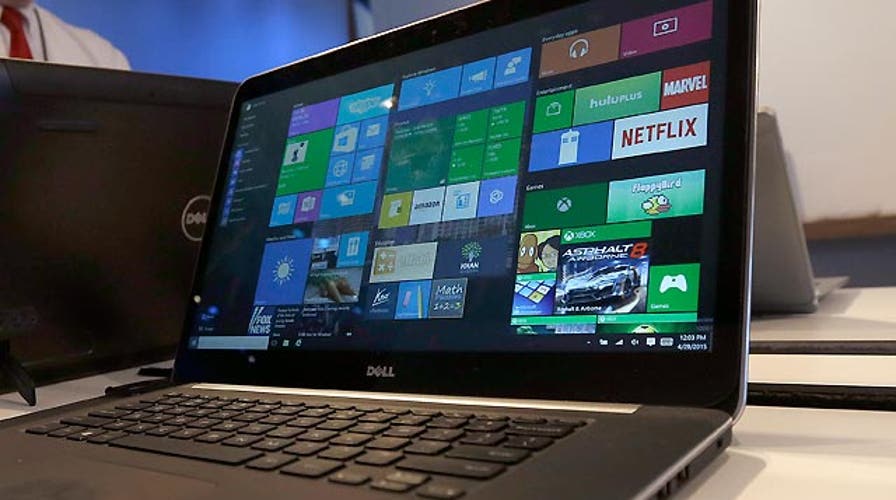Best changes in Windows 10
Adam Housley and TechnoBuffalo's Todd Haselton walk through the latest advancements and changes in Microsoft's latest Windows 10 update
Microsoft’s latest iteration of its 30-year-old Windows operating system has arrived. And with it, a flood of positive, albeit prolix, reviews. So, here’s my two-minute version that touches on the most important changes and saves you from wading through 5,000 words.
Speed indeed: It’s fast. I noticed the speed within minutes of using Windows 10 for the first time. Everything is snappier. That includes opening and closing applications or using Microsoft’s new Edge browser. At the moment, I’m using what is arguably Hewlett-Packard’s most cutting-edge ultra-thin laptop, the recently released EliteBook Folio 1020. Because the 1020 is so thin, it uses a power-sipping Core M Intel chip, which struggled occasionally under heavy processing loads on Windows 8.1 But performance has improved noticeably on Windows 10. It not only runs faster but cooler. Note — I don’t know if everyone will see a noticeable performance improvement with Windows 10. My guess is that everyone’s mileage may vary depending on how optimized the hardware is for Windows 10.
Windows win-win: No more win-lose propositions. With Windows 8.1, you gained a new design but lost half the desktop to an (often) intrusive touch interface. The return of a monolithic, traditional windowed, mouse-and-keyboard interface is probably the single biggest change — and it’s a very striking difference the first hour or so you use Windows 10 (if you’re coming from 8.1). Subconsciously, I kept waiting for the old 8.1 touch interface to make an unwelcome appearance. But that will never happen unless you want it to.
And apps that you download from the Microsoft Store – which used to automatically launch the touch interface – now run as traditional windowed applications. I can’t overstate how welcome this is. For example, a couple of dictionary apps, which previously stymied my workflow because they ran in touch mode, now behave themselves very nicely as regular Windows applications.
Virtual desktops: For me, this also ranks as one of the top new features. Click on the “Task View” button on the task bar (which runs along the bottom of the Windows 10 screen) and it shows all of the currently running apps. But the killer is that you can drag apps into “desktops” that run as virtual stand-alone environments. For example, you can create “Desktop 1” as your work environment, running all of your productivity applications, then create “Desktop 2” as your fun space with games, videos etc. Or maybe parcel up different Desktops (1,2,3,4,5) based on different projects you’re working on. Virtual desktops is a great asset that unclutters and clarifies.
Getting personal with Cortana — or trying to: you can now use Microsoft’s digital “personal” assistant Cortana on a PC (already available on Windows Phone). Cortana is a good idea – but in practice it's erratic. For example, after I gave the verbal command to “send an email,” it often failed to recognize the recipient’s name (though it did work a few times -- recognizing the recipient, subject, and message text that I dictated). That said, Cortana is more suited to, and much better at, simple things like looking up a restaurant’s location or creating an entry on the Windows Calendar. One qualifier I should add: I am using a built-in laptop microphone. Microsoft says a higher-quality standalone mic may produce better results.
Notifications and controls: Action Center is another great addition. Click on “Notifications” on the right-hand side of the Task Bar and up pops up a bunch of useful stuff. For example, you can see all of your most recent messaging and email, switch to tablet mode, get quick access to settings, and toggle items like Wi-Fi, Bluetooth, and airplane mode.
A Mac can’t touch that: Microsoft of course isn’t abandoning touch just making it less intrusive. Despite all of the criticism heaped on Microsoft (include me in that heap) about Windows 8.1’s dual personality, touch itself (free of the unwelcome Window 8.1 touch mode) is nice to have as an option. If you have a touch screen (which many new Windows laptops do these days), you can always use your fingers to, for example, navigate Web pages (which I prefer sometimes). And the new Microsoft Edge browser takes touch and stylus input a step further. Edge allows you to use a stylus to write directly on the browser or even scrawl notes with your finger – which can all be shared. I didn’t have time to try this extensively but it seemed to work pretty much as advertised.
And let me add that touch is a too-often under-emphasized advantage over the Mac. It has always struck me as odd that the Mac lacks touch. Especially when Apple is now selling a very-tablet-like laptop, the new 12-inch MacBook Retina. On the other hand, both the HP Elitebook 1020 I’m using now and the 2015 version of the Dell XPS 13, which I also use, have touch. It's great to have when you need it.
Office Mobile apps for Windows 10: Regrettably I haven't yet had time to use the new Office Mobile apps for Windows 10. Word, Excel, PowerPoint and OneNote are built from the ground up for touch. This should be a boon for tablets like Microsoft's Surface 3 and Surface Pro 3.
Not everything needs to change: The photos app is still pretty much the same, which is fine with me as I’ve always thought this was well-designed and a joy to use. And the Control Panel is still there in all of its (mostly) static glory.
In summary, I'll repeat what I've said before (and echo other Windows 10 reviews), think of Windows 10 as just a better version of Windows 8.1. That makes the upgrade a no-brainer.

